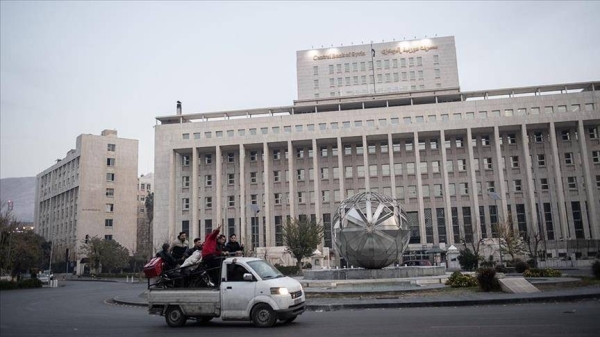Revolution in Damascus: The Fall of Assad’s Regime
In a historic turn of events, the Syrian government collapsed as opposition forces launched a swift and decisive offensive that captured the capital, Damascus, ending the Assad family’s 50-year rule. This marked a new chapter in Syria’s tumultuous history, with jubilant crowds filling the streets to celebrate the regime’s downfall.
Full Review
Syrian state television aired a dramatic video in which a group of men announced that President Bashar Assad had been overthrown, proclaiming the freedom of all political prisoners. The opposition group “Operations Room to Conquer Damascus” urged citizens to preserve the institutions of the newly formed “free Syrian state.” As reports surfaced of Assad fleeing to an undisclosed location, residents across Damascus expressed shock at the speed of the regime’s downfall.
As dawn broke over the capital, residents gathered in mosques and public squares to celebrate the end of Assad’s rule. Anti-Assad slogans echoed through the streets as people honked car horns in joy, with teenagers picking up discarded weapons and firing them into the air. Soldiers and police abandoned their posts, looters stormed government buildings, and families even entered the presidential palace to claim household items.
The historically pro-government newspaper al-Watan declared a new page for Syria, thanking God for the regime’s fall and distancing itself from past actions. The Alawite sect, a core base of Assad’s support, urged calm and unity amidst the change. Prime Minister Mohammed Ghazi Jalali expressed readiness to hand over power to a transitional government, having lost contact with Assad and the defense minister.
International reactions were mixed, with Iran remaining silent and UAE diplomat Anwar Gargash likening Assad’s flight to a historical footnote. Assad’s legacy, marred by accusations of war crimes, culminated in a dramatic end to years of authoritarian rule as opposition forces swept through key cities and met little resistance.
The offensive, spearheaded by Hayat Tahrir al-Sham (HTS), led to urgent calls for talks in Geneva to ensure an orderly political transition. Russian Foreign Minister Sergey Lavrov expressed regret over the Syrian people’s suffering, while the Israeli military deployed troops to its northern border in response to security concerns amid the rebel advance.
Conclusion
The fall of Assad’s regime in Damascus marks a significant turning point in Syria’s history, with implications for regional stability and the future of the country. As the dust settles, the world watches to see how Syria will navigate this new chapter and what lies ahead for its people.
FAQs Section
1. What led to the collapse of the Syrian government?
The collapse of the Syrian government was a result of a swift and decisive offensive launched by opposition forces that captured the capital, Damascus, ending the Assad family’s 50-year rule. The regime’s downfall came after years of civil war and mounting international pressure.
2. How did residents of Damascus react to the news of Assad’s fall?
Residents of Damascus reacted with shock and jubilation as they gathered in mosques and public squares to celebrate the end of Assad’s rule. Anti-Assad slogans filled the streets, and people honked car horns in joy, with some even picking up weapons and firing them into the air.
3. What was the role of the Alawite sect in the aftermath of Assad’s departure?
The Alawite sect, a core base of Assad’s support, urged calm and unity in the face of change following Assad’s departure. They emphasized the need for reason and dialogue to prevail, signaling a willingness to move forward in a new direction for Syria.
4. How did the international community react to Assad’s flight from Damascus?
International reactions to Assad’s flight were mixed, with some countries remaining silent while others expressed regret over the suffering of the Syrian people. Calls for urgent talks in Geneva to ensure an orderly political transition highlighted the global concern for stability in the region.
5. What was the significance of the offensive led by Hayat Tahrir al-Sham (HTS)?
The offensive led by HTS was a decisive military campaign that brought opposition forces into key cities and ultimately led to the collapse of the Syrian government. HTS sought to rebrand itself as a pluralistic and tolerant movement, signaling a potential shift in the political landscape of Syria.
6. How did the Israeli military respond to the rebel advance in Syria?
The Israeli military announced deployments to its northern border in response to security concerns amid the rebel advance. Troops were stationed in the Golan Heights buffer zone to protect the area, reflecting Israel’s strategic interests in the region.
7. What are the broader implications of Assad’s departure for Syria?
Assad’s departure marks a significant turning point in Syria’s history, with implications for regional stability and the future of the country. The fall of his regime opens up new possibilities for political transition and reconciliation among the Syrian people.
8. How did the United Nations Special Envoy for Syria respond to the situation in Damascus?
The United Nations Special Envoy for Syria, Geir Pedersen, called for urgent talks in Geneva to ensure an orderly political transition in light of the evolving situation in Damascus. His efforts underscored the international community’s commitment to supporting Syria during this critical juncture.
9. What role did the media play in reporting on Assad’s downfall?
The media, both domestic and international, played a crucial role in reporting on Assad’s downfall and the swift collapse of the Syrian government. News outlets provided real-time updates and analysis, shaping public perceptions of the events unfolding in Damascus.
10. How does the fall of Assad’s regime impact the future of Syria?
The fall of Assad’s regime sets the stage for a new chapter in Syria’s history, with opportunities for political reform and national reconciliation. As the country navigates this period of transition, the focus will be on building a more inclusive and stable future for all Syrians.

